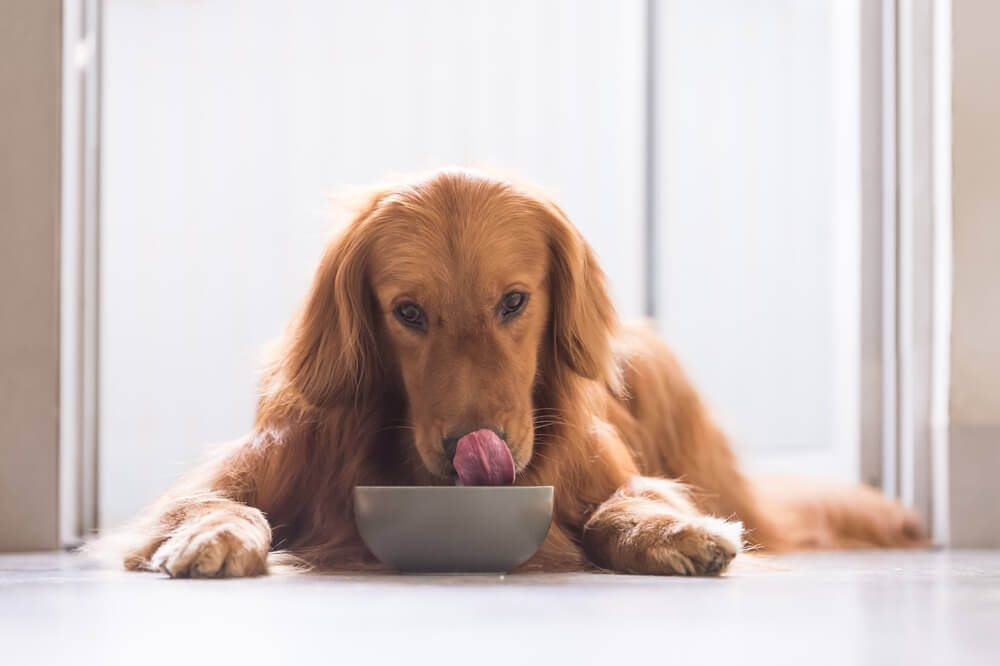Most pet lovers want to know, “can dogs eat quinoa?” It comes as no surprise really, since we’re crazy about this superfood all around the world. If you’re a pet parent wondering if quinoa is good for dogs, this article is for you. Here is everything you need to know about the potential health benefits of quinoa for your dog.
Quinoa is one of the healthiest foods out there. Although this South American seed has been around for thousands of years, it’s only gained popularity in recent times, becoming a go-to for health fanatics.
Quinoa is gluten-free and packed with a wide array of nutrients. Most of us choose to eat it as a healthier alternative to rice, corn, wheat, and other grains. It stands to reason that pet parents eating quinoa for its health benefits may wonder whether a little quinoa now and then is good for their dog.
Can Dogs Eat Quinoa?
Yes, dogs can eat quinoa in moderation, and it can even be a healthy addition to their diet when prepared properly. This nutrient-dense grain is easy to digest for most dogs and provides essential vitamins and minerals like magnesium, phosphorus, and folate. However, it’s important to cook the quinoa thoroughly and avoid adding any seasonings, salt, or oils, which can upset your dog’s stomach. Introducing quinoa gradually is also key to ensuring it agrees with your dog’s digestive system, especially if they’ve never had it before.
You might be wondering what makes quinoa a superfood, and the answer to that one is simple. Quinoa is one of the most protein-rich, meat-free foods available, containing all nine essential amino acids. It has more fiber than any other grain and is loaded with nutrients. It’s a gluten-free source of protein and carbs – the perfect choice for people (and dogs) with food sensitivities. You will also find that it’s good for regulating blood sugar and stabilizing metabolic health while reducing inflammation.
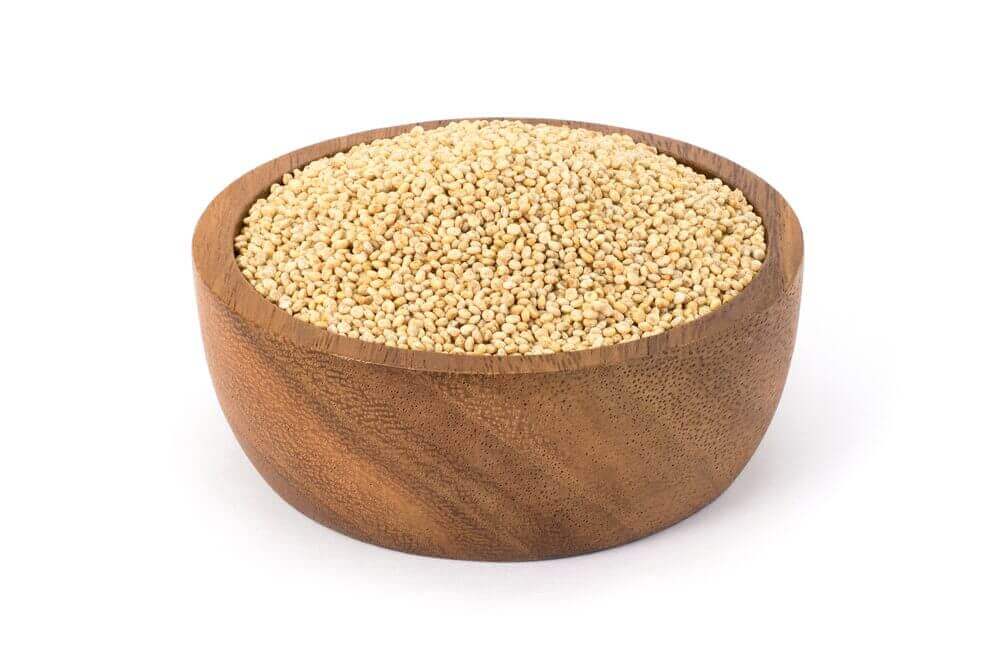
This all said, are all of these health benefits for humans relevant to dogs?
Many foods that are healthy for people aren’t always safe for dogs. In some cases, foods can be extremely dangerous – such as onions. So what about quinoa?
Fortunately, the answer to the question “Can dogs can eat quinoa?” is yes. However, you need to prepare it the right way and in the right quantities.
Potential Health Benefits of Quinoa For Dogs
Now that we have ascertained when quinoa is bad for dogs, let’s look at the benefits that it brings to dogs. Quinoa provides numerous health benefits for dogs, and some of the leading manufacturers already include it in their recipes.
Quinoa is a source of complex carbohydrates, fiber, amino acids, and various vitamins and minerals, including B vitamins, calcium, iron, magnesium, manganese, phosphorus, potassium, thiamin, and vitamin E and zinc.
These nutrients work hard, boosting your dog’s energy, sharpening brain function, improving metabolism, and regulating blood sugar. In addition, the vitamins that quinoa contains helps to give your dog a shiny coat and strong, healthy teeth and nails, while strengthening bones too.
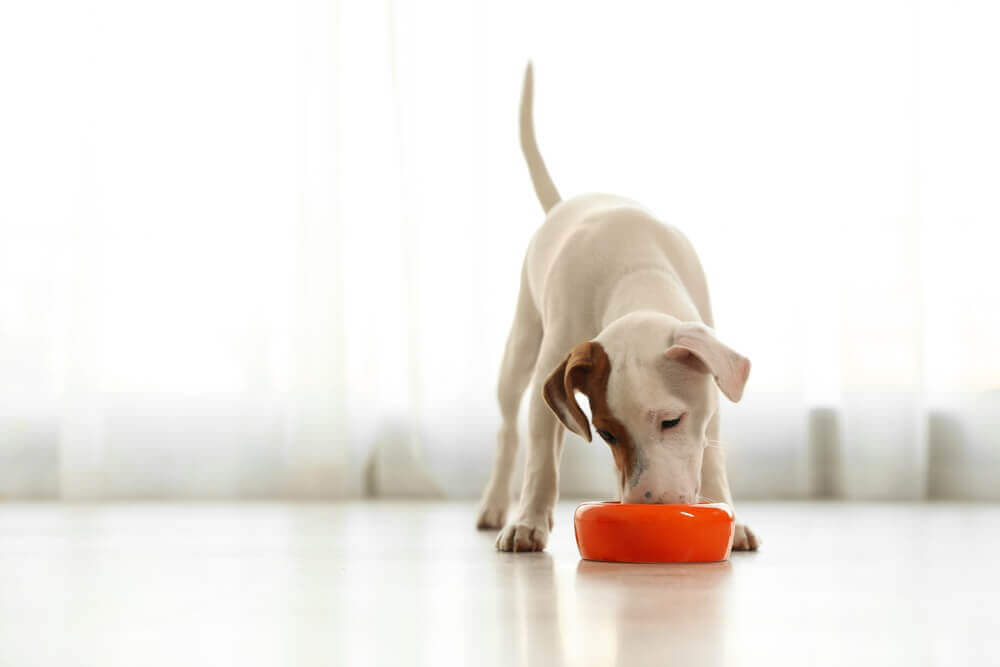
A totally vegetarian food, quinoa is protein-rich and contains all the essential amino acids. It is an excellent source of carbs that you can give to your dog after an exhausting exercise or training session.
On top of that, quinoa is extremely low in fat, making it a good choice for overweight dogs or dogs with pancreatitis. Low in cholesterol, it reduces your dog’s risk of diabetes and heart disease.
It is also a perfect source of Omega 3 fatty acids, which provide many health benefits, including fighting against inflammation and improving cardiovascular health.
When Is Quinoa Bad For Dogs?
Of course, when introducing new food to your dog, it is best to be aware of the possible risks – and feeding your dog quinoa comes with some risk attached.
Quinoa contains small amounts of a chemical called saponin, which may cause intestinal irritation. In fact, it can cause intestinal irritation in both humans and canines.
Saponin is the natural coating on the outside of the seed – it protects from insects. That said, rest assured that it would take a large amount of saponin to create any serious health problems in your pet.
To avoid taking any unnecessary risks, never skip washing the quinoa when preparing it for your pet, as this will help remove most of the saponin.
If you are cooking quinoa from scratch, make sure that you cook the quinoa well to destroy the remaining saponin instead of mixing it in raw with your dog’s pet food. If you don’t cook it properly, it may induce stomach irritations or cause vomiting, diarrhea, or constipation.

Plants also contain organic acids called oxalates. Oxalates can cause inflammation and increase pain in dogs with arthritis. Be careful with how much quinoa you feed your dog. If your dog is eating a balanced and complete meal, you don’t want to over-supplement, leading to weight gain and additional health issues.
Never give your dog quinoa from your plate. Your serving (at least in most cases) is most likely seasoned with salt, soy sauce, onions, and maybe garlic – remember that garlic can be toxic to dogs.
Instead, prepare your pet’s dish separately, or select a premium human-grade dog food such as Spot & Tango’s Turkey & Red Quinoa. This recipe from our range has just the right proportions to other ingredients and is free from additives, preservatives and questionable fillers.
Food allergies are something all pet parents have to watch out for as well, and while it is very rare, some dogs develop an allergy to quinoa. To be cautious, it’s best to be aware of the signs of this allergy in dogs. These include:
- Skin irritation or infection
- Ear infection
- Chewing and licking paws
- Hair loss
- Hives
- Runny eyes and nose
If your dog has any of these allergic responses after eating quinoa, stop feeding it to your pet immediately. If the allergy symptoms are severe, it is imperative to consult with your vet.
How to Safely Feed Quinoa to Your Dog
Your next question is probably, “How should I feed quinoa to my dog?” Usually, this food is perfectly healthy for dogs; however, some may have problems digesting it. Therefore, always prepare it well-cooked and serve it in the right quantities.

It should always be given as part of a complete and balanced diet, not as a complete meal. If your dog hasn’t ever eaten it before, start by adding it in small amounts to meals.
It’s completely safe to give your dog this seed daily. Keep in mind that there are 220 calories in one cup of cooked quinoa. This should impact how much you mix into your dog’s meal. Small dogs only need a tablespoon or two.
If you are planning to cook your own from scratch instead of buying dog food with healthy quinoa in it, here’s how to do that:
- Wash the quinoa thoroughly.
- Boil it in water. One part quinoa to two parts liquid is the ratio to go by.
- Bring the quinoa to a boil, then lower the heat and let it simmer until the liquid evaporates.
- Let it cool down. Make sure it is not overly hot, and then mix it into your dog’s food.
For a more full-flavored savory dish, you could cook the quinoa in a broth of vegetables or meat and bones. Choose to make homemade broths, as store-bought broths often contain high sodium and additives which aren’t healthy for dogs.
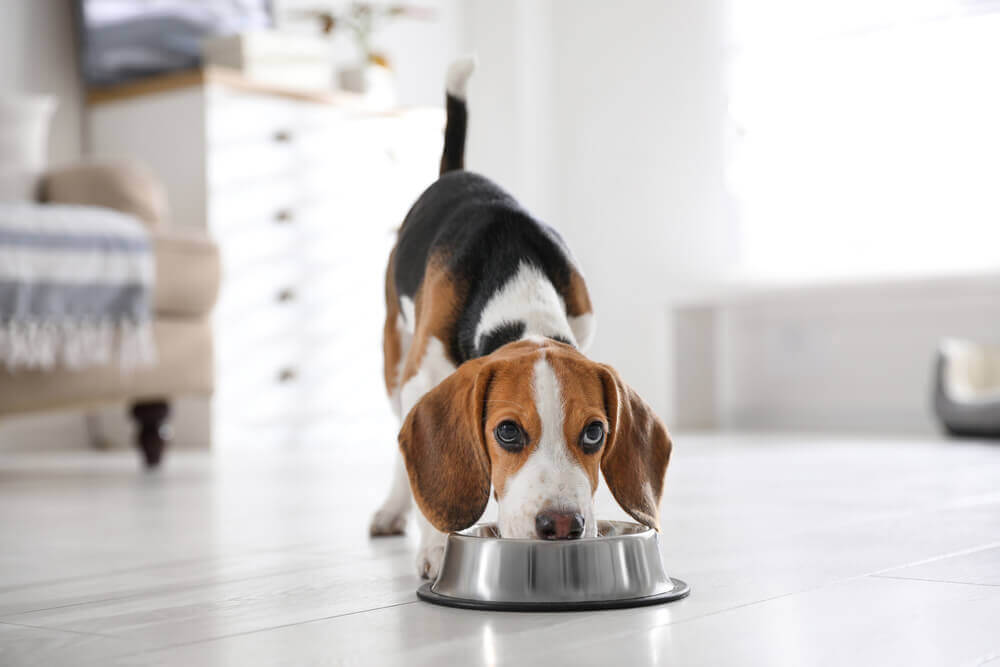
As with any other new food, start by giving your dog only a tiny portion. Adding one spoonful to your canine’s regular meal is a great place to start. Store any leftovers in the fridge for up to five days.
Many pet parents prefer buying dog food with quinoa in the ingredients. Buying vet nutritionist-designed dog food from the likes of Spot & Tango takes the guesswork out of preparation and portion sizing for dogs.
Frequently Asked Questions:
Q. Can dogs eat red quinoa?
Yes, dogs can eat red quinoa. The red variety has a heartier flavor than the white.
Q. Can dogs eat cooked quinoa?
Yes, dogs should only eat cooked quinoa. Make sure to wash it and cook it properly without any spices such as garlic, onions, or soy sauce.
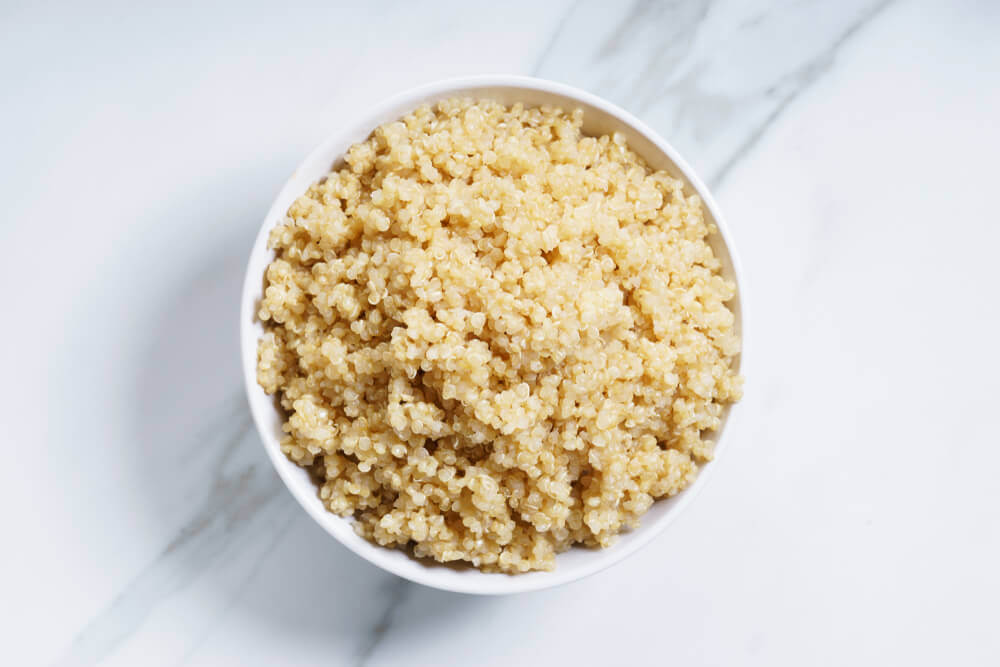
Q. Is quinoa good for dogs with pancreatitis?
Yes! It is extremely low in cholesterol, high in fiber, and contains valuable nutrients such as omega-three fatty acids and antioxidants, which benefit those suffering from pancreatitis.
Final Thoughts
So, can dogs eat quinoa? And is quinoa good for dogs? Indeed, this is one of those foods that is good for both you and your beloved pet dog. Adding a small amount to your dog’s meal can be beneficial to their health.
Protein-rich and packed with nutrients, this seed works to improve overall health from the inside out.
It offers many benefits and supports with good cardiovascular health, maintaining weight, and sharpening brain function. In addition, the essential nutrients in quinoa give your dog a healthy look, with a sleek and shiny coat and healthy skin and nails.
To ensure that your dog is getting a nutritious and healthy diet, make sure to check out the Spot & Tango website, where you can build your dog’s personalized meal plan.
You can choose Turkey and Red Quinoa and a several other options, since the plan allows multiple selection of meals. Make your dog’s diet more balanced and givethe most nutrients possible to your pup.


